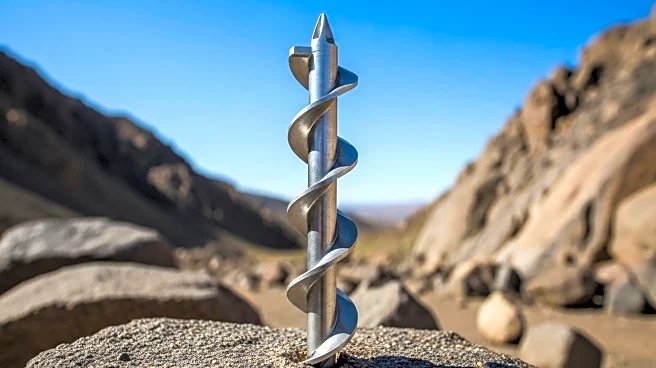What's Happening?
Perpetua Resources has received conditional approval from the U.S. Forest Service to begin construction on its Stibnite gold and antimony project. The approval is contingent upon the company posting joint financial assurance bonding, as agreed with the U.S. Forest Service, Idaho Department of Lands, and U.S. Army Corps of Engineers. The Stibnite mine is projected to supply over 35% of the annual antimony needs in the United States by 2028 and produce 450,000 ounces of gold per year. Following this announcement, Perpetua's stock rose by 2% to $17.8 in premarket trading, marking a 63% increase year-to-date.
Why It's Important?
The construction of the Stibnite mine is significant for the U.S. as it aims to reduce reliance on foreign sources for antimony, a critical mineral used in various industrial applications, including flame retardants and batteries. The mine's output will contribute substantially to domestic supply, enhancing national security and economic stability. Additionally, the production of gold will bolster the company's financial performance and potentially increase shareholder value. This development reflects broader efforts to secure critical mineral resources within the U.S., aligning with national strategic interests.
What's Next?
Perpetua Resources will need to fulfill the financial assurance bonding requirements before commencing construction. The company is likely to engage with stakeholders, including local communities and environmental groups, to address any concerns related to the project's impact. Monitoring and regulatory compliance will be crucial as construction progresses. The successful development of the Stibnite mine could set a precedent for future mining projects in the U.S., influencing policy and investment in the sector.
Beyond the Headlines
The approval of the Stibnite mine highlights the ongoing debate between resource extraction and environmental conservation. While the project promises economic benefits and resource security, it also raises concerns about ecological impacts and sustainability. Balancing these interests will be essential as the U.S. continues to develop its domestic mining capabilities.











